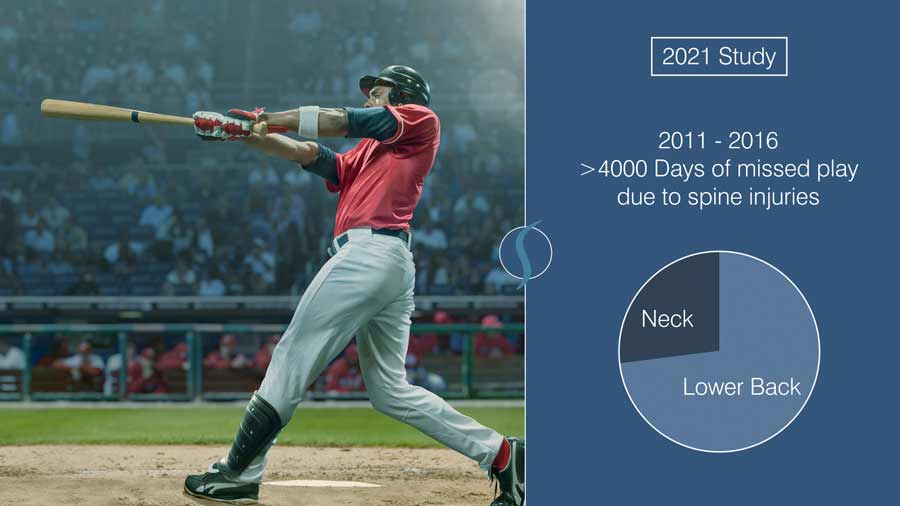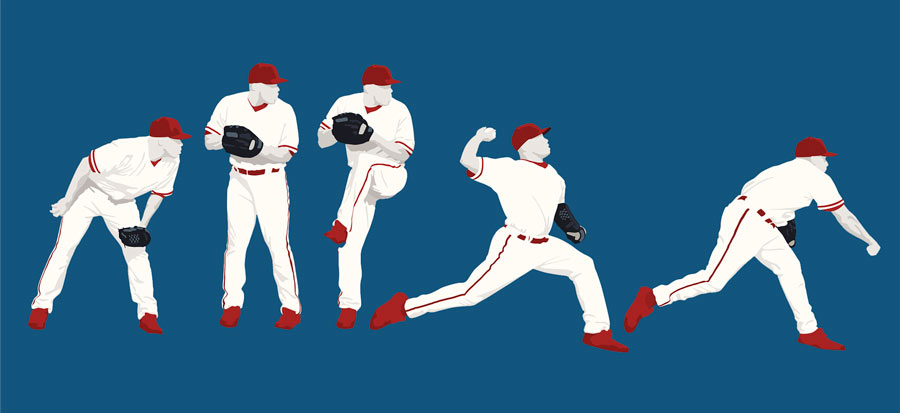Spine Injuries in Baseball
In this video/blog, we’ll be taking a look at common back injuries in professional baseball players.
While football may have more high profile injuries than baseball, all professional athletes are exposed to high-impact forces. Professional baseball players also experience some of the highest rates of disc degeneration and back pain, but simultaneously a high rate of returning to play post-injury compared to other sports activities.
Study review

A case series study conducted in 2021 by Makhni et al, analyzed the epidemiology — that is, the causes and determinants — of degenerative cervical and lumbar spinal conditions that affect baseball players in MLB and MiLB. the researchers were able to use public data available from an MLB-commissioned database called the Health and Injury Tracking System.
From 2011 to 2016, more than 4,000 days of play were missed with 73% of the spine-related injuries related to the low back and the rest (27%) related to the neck. Players missed an average of 13 more days due to low back injuries than due to neck injuries. It is important to note that this does not account for the 19% of injuries that were season ending.

Pitchers have significantly higher rates of spinal injuries, nearly double that of the other position players. While pitchers do not play every game, the repetitive high torsional forces on the spine put them at a much greater risk for injury.
With the ideal pitching form, the trunk lean is towards the catcher and the lead knee has appropriate flexion to decelerate forward motion of the body. If the pitcher’s front leg is nearly fully extended as shown here, it hinders the pitcher’s deceleration of his forward motion. The summation of linear and rotational forces at this point will primarily be centered in the lower back and cause stress. In this form, the pitcher has a near vertical trunk position, with noticeable extension of the lumbar spine during trunk and pelvis forward rotation. Failure to properly engage the lower leg and hip muscles forces the upper torso and arms to compensate by exaggerating lumbar extension, which also causes stress on the lower back.

While the actual cause of pain to pitchers may involve many factors including ligament and tendon stretching, muscle imbalance, facet stress, disc abnormalities, etc., the cumulative stress from the repetitive throwing motion is likely the major source.
Conclusion
This study found that injuries of the neck and lower back led to substantial disability among MLB and MiLB players, with pitchers being much more vulnerable to spinal injury than their counterparts.
By expanding research on the epidemiology of these injuries and patient outcomes, more focus can be made on prevention and optimizing treatment for the baseball players. Proactive steps by Organized Sports Entities Like MLB will hopefully contribute to a healthier and better long term lifestyle for these players. Until next time, this is Dr. Shim.
Citations
- Wasser JG, Zaremski JL, Herman DC, Vincent HK. Assessment and rehabilitation of chronic low back pain in baseball: part II. Res Sports Med. 2017 Apr-Jun;25(2):231-243. PubMed PMID: 28128000
- Makhni MC, Curriero FC, Yeung CM, Leung E, Kvit A, Mroz T, Ahmad CS, Lehman RA Jr. Epidemiology of Spine-Related Neurologic Injuries in Professional Baseball Players. Spine (Phila Pa 1976). 2021 Jul 7; PubMed PMID: 34265806
Last modified: August 5, 2021









